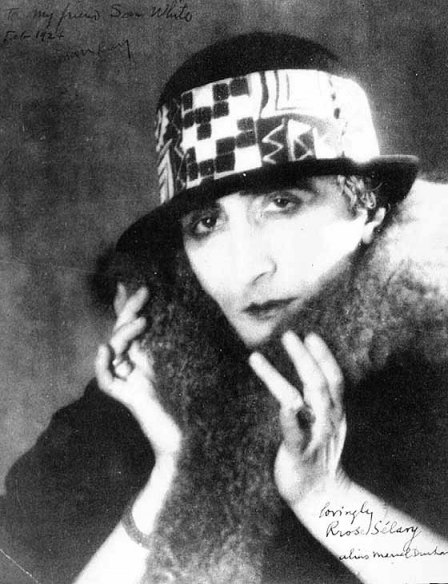I came across this clever YouTube video yesterday while brushing up my knowledge of Rrose Selavy (Duchamp’s pun on Eros, c’est la vie).
What particularly struck me (and which I always admired in Duchamp) is the playfulness of his art, but also its depth. The concept of a game between a person’s personas is a recurring theme in Duchamp’s work that, in my opinion, is highly relevant to our discussion of identity in virtual worlds. Like in Duchamp’s work, there is an inherit playfulness in the concept of virtual worlds – whether or not we consider SL to be a game is beyond the point; it is as its basis a form of entertainment where one can create and live in their own embodied “world.” There is also, as we’ve discussed, an inherent depth in embodied virtual worlds in that users can fashion alter egos and act out alternate identities and fantasies.
Similarly to many avatars in SL, Rrose became an artist in her own right in a series of photographs taken by Man Ray (see above), becoming one of the first “female” performance artists of the20th century (while I may be taking this too far, I cannot help but be reminded that before enlisting Charlotte Moorman, Paik attempted to perform his provocative pieces himself. It has always surprised me that Moorman was never taken seriously as an artist, becoming more of a muse, as discussed in pixelreanimator’s post, than an artist in her own right. If we can separate Duchamp and Selavy, why is it so hard to separate Paik and Moorman? Would have Paik’s alter ego been able to forge her own identity, separate from Paik? Is it a gender issue?). Like the everyday objects Duchamp transformed into art, he transformed himself not only into a woman, but also into art. The same could be said of many SL artists whose virtual identities have become their art.
